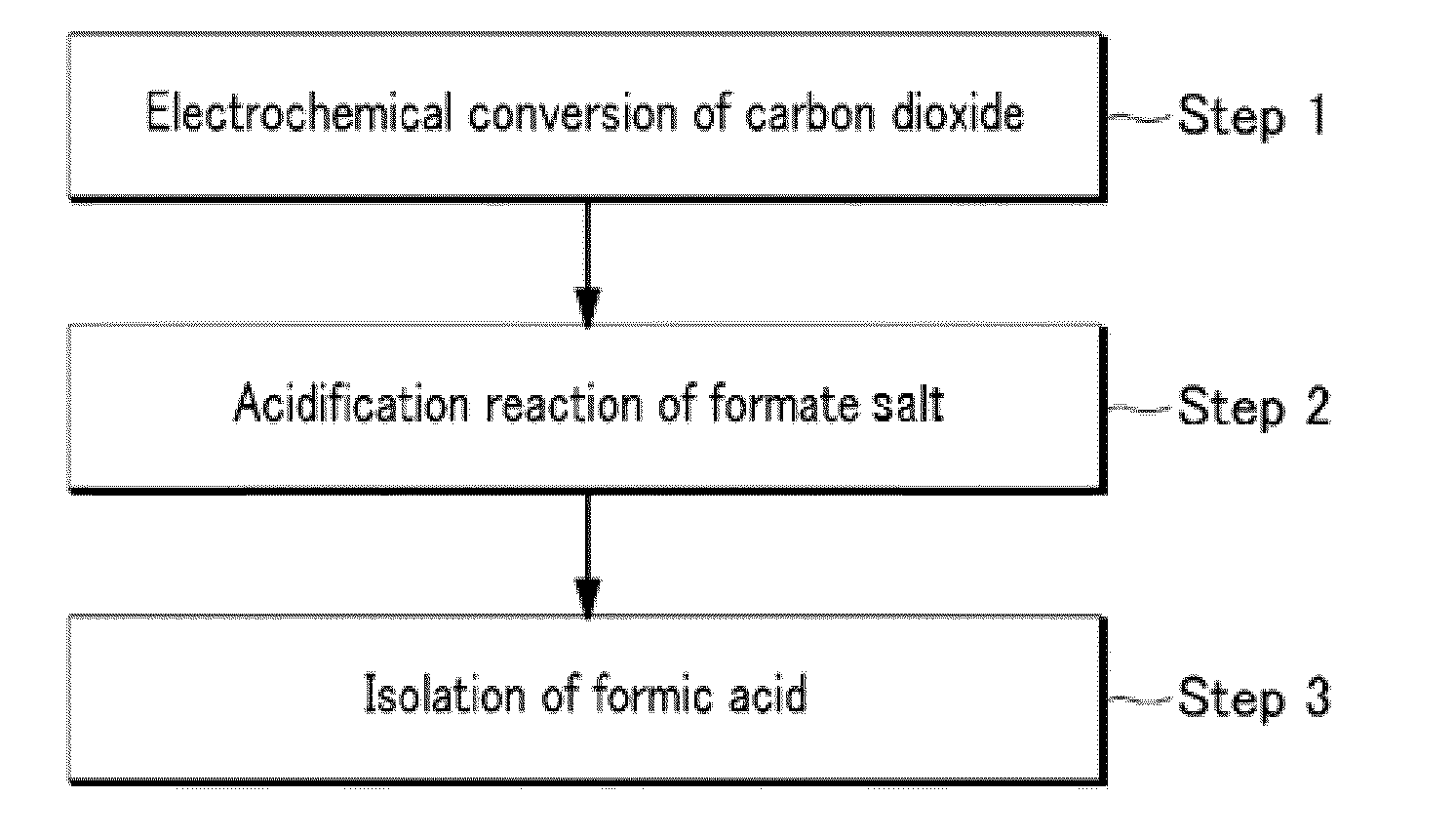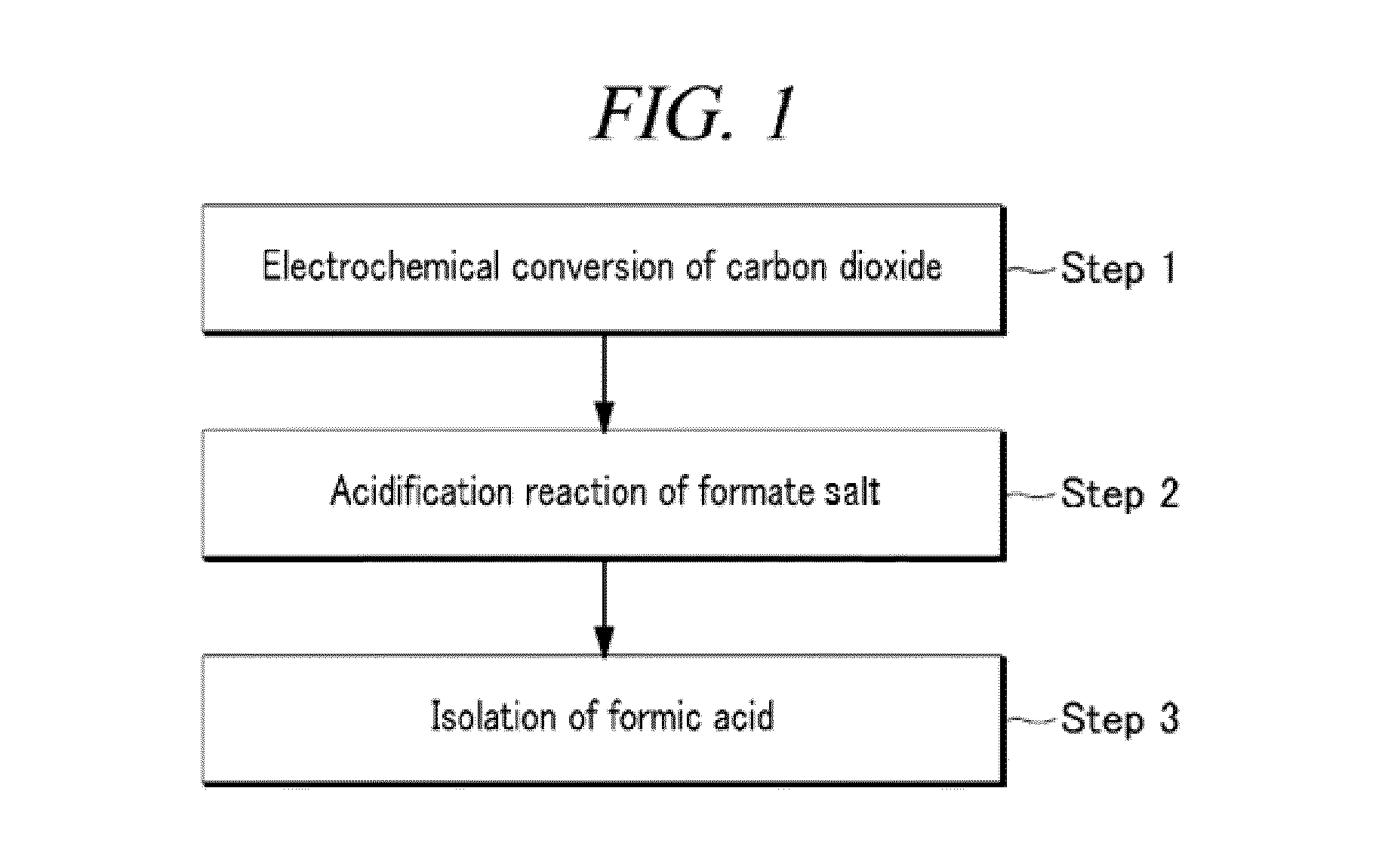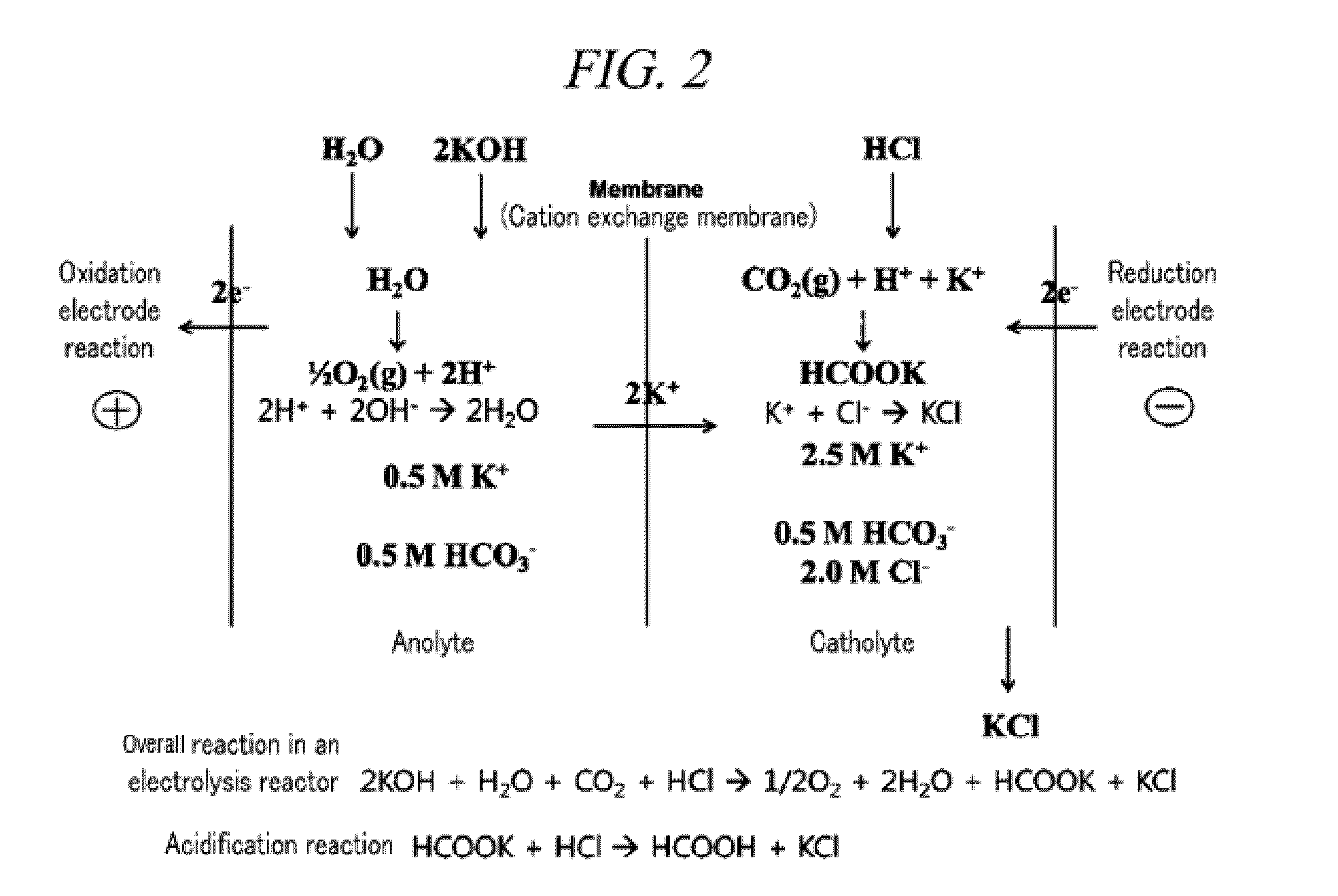Electrochemical reduction method of carbon dioxide using solution containing potassium sulfate
- Summary
- Abstract
- Description
- Claims
- Application Information
AI Technical Summary
Benefits of technology
Problems solved by technology
Method used
Image
Examples
example
Example 1
[0040]Prior to performing an actual process, a basic experiment for conversion of carbon dioxide in a laboratory scale was conducted. For the experimental method, a constant current (5 mA / cm2) was applied, and conversion efficiency was calculated by a charge amount for an amount of carbon dioxide converted into formic acid to a whole amount of flowing charge. FIG. 4A shows a shape of a H-type cell used in the experiment.
[0041]A H-type cell, in which each of the solutions of the oxidation electrode unit and the reduction electrode unit has a volume of about 10 mL, was used, and for both the solutions, an about 0.5 M K2SO4 solution was used. A rod-shaped dental amalgam electrode having an about 3.5 cm2 area was used as a reduction electrode, and a platinum electrode was used as an oxidation electrode. During the electrolysis, the solutions were uniformly stirred by using a magnetic stirrer, and the produced formate salt was quantified by using HPLC. In order to maintain pH to...
example 2
[0043]A basic experiment for conversion of carbon dioxide in a laboratory scale was conducted by using a flow cell as shown in FIG. 4B.
[0044]A flow cell, in which each of the solutions of the oxidation electrode unit and the reduction electrode unit has a volume of about 250 mL, was used, and for both the solutions, an about 0.5 M K2SO4 solution was used. A plate-shaped dental amalgam electrode having an about 10 cm2 area was used as a reduction electrode, and a Ti plate having the same size as the reduction electrode and coated with RuO2 was used as an oxidation electrode. The solutions were circulated at about 30 mL / min rate through a pump during the electrolysis, and in order to maintain the ion balance of the whole reaction, a KOH solution was properly injected from the outside into the oxidation electrode unit. The produced formate salt was quantified by using HPLC. Efficiency of the conversion of carbon dioxide into formic acid was calculated from the amount of flowing charge ...
PUM
| Property | Measurement | Unit |
|---|---|---|
| Molar density | aaaaa | aaaaa |
| Molar density | aaaaa | aaaaa |
| Efficiency | aaaaa | aaaaa |
Abstract
Description
Claims
Application Information
 Login to View More
Login to View More - R&D
- Intellectual Property
- Life Sciences
- Materials
- Tech Scout
- Unparalleled Data Quality
- Higher Quality Content
- 60% Fewer Hallucinations
Browse by: Latest US Patents, China's latest patents, Technical Efficacy Thesaurus, Application Domain, Technology Topic, Popular Technical Reports.
© 2025 PatSnap. All rights reserved.Legal|Privacy policy|Modern Slavery Act Transparency Statement|Sitemap|About US| Contact US: help@patsnap.com



